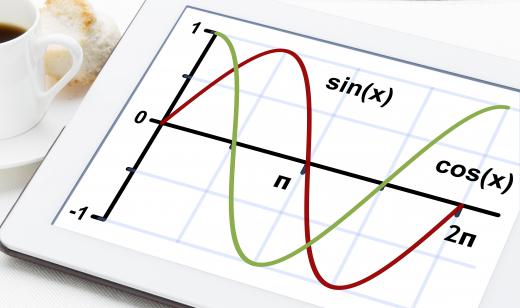What Is an Even Function?
An even function is defined as any function in which the statement f(x) = f(-x) holds true for all real values of x. Equivalently, an even function is any function that is defined for all real values of x and has reflexive symmetry about the y-axis. Oddness or evenness of functions is primarily of use in graphing functions.
A function is a relationship that relates the elements from one set of numbers — the domain, to the elements of another set — the range. The relationship is generally defined in terms of a mathematical equation, where if a number from the domain is inserted into the equation, a single value from within the range is given as the answer. As an example, for the function f(x) = 3x2 + 1, when x = 2 is the value selected from the domain, f(x) = f(2) = 13. If the domain and the range are both from the set of real numbers, then the function can be graphed by plotting each point (x, f(x)), where the x-coordinate is from the domain of the function and the y-coordinate is the matching value from the range of the function.
Related to the concept of the even function is the odd function. An odd function is one in which the statement f(x) = -f (-x) for all real values of x. When they are graphed, odd functions have rotational symmetry around the origin.

Although the majority of functions are neither odd nor even, there still exist an infinite number of even functions. The constant function, f(x) = c, in which the function only has one value no matter which value from the domain is selected, is an even function. The power functions, f(x) = xn, are even so long as n is any even integer. Among the trigonometric functions, cosine and secant are both even functions, as are the corresponding hyperbolic functions f(x) = cosh(x) = (ex + e-x)/2 and f(x) = sech(x) = 2/ (ex + e-x).
New even functions can be created from other functions that are known to be even functions. Adding or multiplying any two even functions will create a new even function. If an even function is multiplied by a constant, the resulting function will be even. Even functions can also be created from odd functions. If two functions known to be odd, such as f(x) = x and g(x) = sin(x), are multiplied together, the resulting function, such as h(x) = x sin(x) will be even.
New even functions can also be created by composition. A composition function, such as h(x) = g(f(x)), is one in which the output of one function — in this case f(x) — is used as the input for the second function — g(x). If the innermost function is even, the resulting function will also be even regardless of whether the outer function is even, odd, or neither. The exponential function g(x) = ex, for example, is neither odd nor even, but because cosine is an even function, so is the new function h(x) = ecos(x).
One mathematical result holds that every function defined for all real numbers can be expressed as the sum of an even and an odd function. If f(x) is any function defined for all real numbers, it is possible to construct two new functions, g(x) = (f(x) + f(-x))/2 and h(x) = (f(x) – f(-x))/2. It follows that g(-x) = (f(-x) + f(x))/2 = (f(x) + f(-x))/2 = g(x) and therefore g(x) is an even function. Likewise, h(-x) = (f(-x)-f(x))/2 = - (f(x)-f(-x))/2 = -h(x) so h(x) is by definition an odd function. If the functions are added together, g(x) + h (x) = (f(x)+f(-x))/2 + (f(x)-f(-x))/2 = 2 f(x) / 2 = f(x). Therefore every function f(x) is the sum of an even and an odd function.
AS FEATURED ON:
AS FEATURED ON:











Discuss this Article
Post your comments